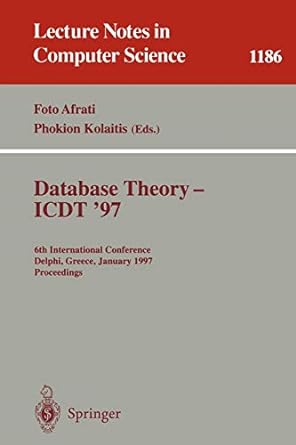Answered step by step
Verified Expert Solution
Question
1 Approved Answer
Consider the following set of candidate 3-itemsets: {p,q,r},{p,q,s},{p,q,t},{p,r,s},{p,r,t},{q,r,s},{q,r,t},{q,s,t},{r,s,t}. (a) (7 pts) Construct a binary hash tree for storing the above 3 -itemsets. Assume the hash


Step by Step Solution
There are 3 Steps involved in it
Step: 1

Get Instant Access to Expert-Tailored Solutions
See step-by-step solutions with expert insights and AI powered tools for academic success
Step: 2

Step: 3

Ace Your Homework with AI
Get the answers you need in no time with our AI-driven, step-by-step assistance
Get Started


